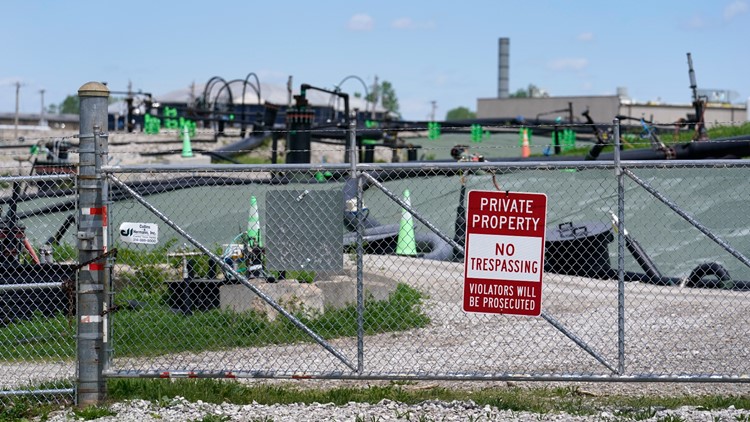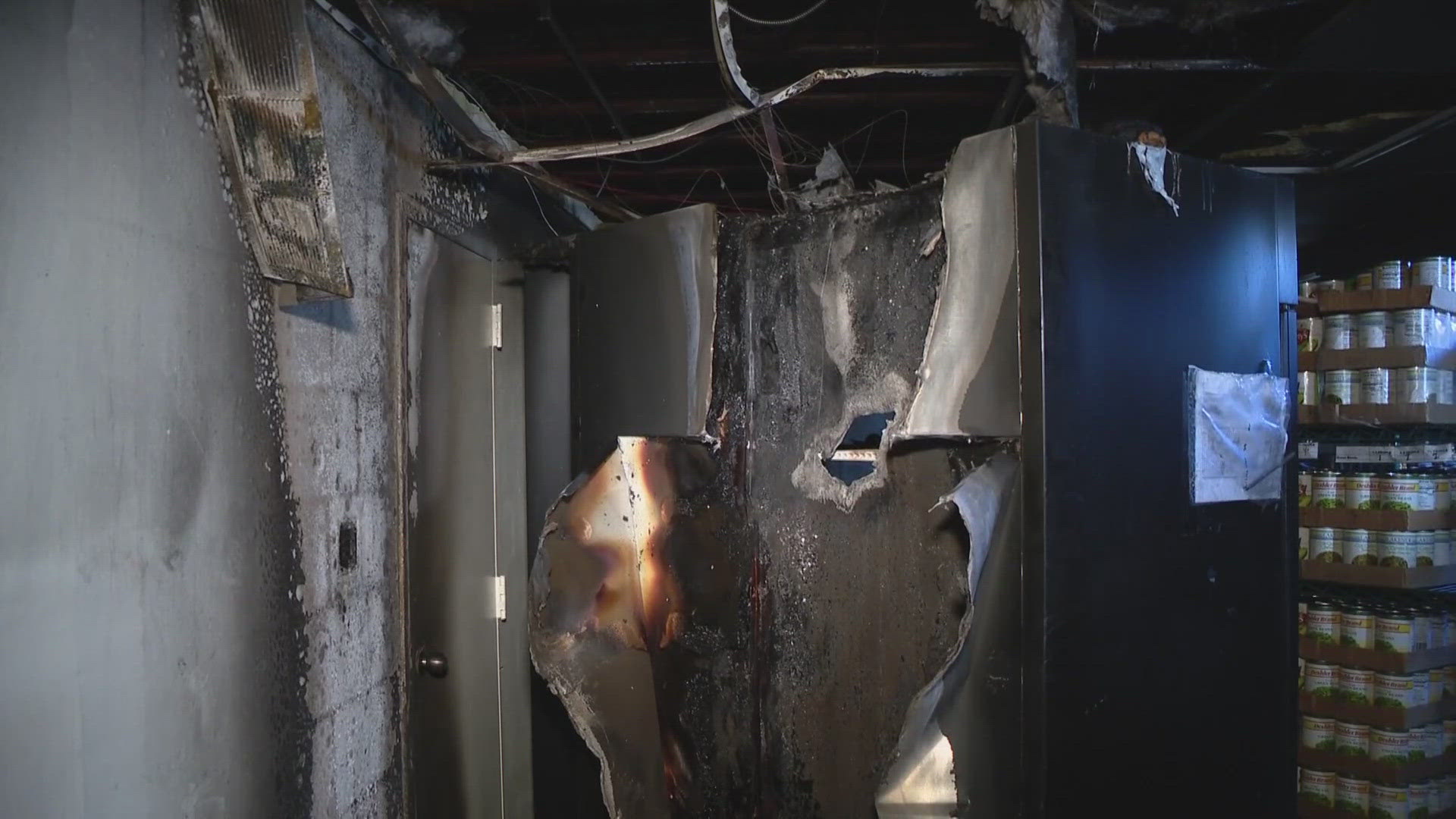ST. LOUIS — Uranium processing in the St. Louis area played a pivotal role in developing the nuclear weapons that helped bring an end to World War II and provided a key defense during the Cold War. But the cost to the region has been staggering.
Eight decades after Mallinckrodt Chemical Works first began the dangerous task of processing uranium at a sprawling complex near downtown St. Louis, the federal government is still removing soil from a creek and cleaning up a landfill — nuclear contamination sites. Last year, a grade school closed amid worries that contamination from the creek got onto the playground and inside the building.
See 5 On Your Side coverage of radioactive waste in St. Louis through the years: ksdk.com/radioactive
The government has paid out millions to former Mallinckrodt workers with cancer, or their survivors. Many people with rare cancers who grew up near the waste sites believe their illnesses, too, are connected to radiation exposure.
The Associated Press examined hundreds of pages of internal memos, inspection reports and other items dating to the early 1950s. This story is part of an ongoing collaboration between The Missouri Independent, the nonprofit newsroom MuckRock and AP. The government documents were obtained by outside researchers through the Freedom of Information Act and shared between the news organizations.
Some takeaways from the work:
St. Louis' role in nuclear work
During World War II, a rush began to build a nuclear bomb amid worries that the Germans also were trying to do so. The federal government turned to Mallinckrodt to process uranium into a concentrated form that could be further refined elsewhere, turning it into the material that made it into nuclear weapons.
There remains great pride in St. Louis among those who recognize that the bomb development helped bring an end to the war. But the effort resulted in widespread contamination. Government agencies have completed cleanup in some places, but it's ongoing in others.
Contamination in several sites of region
The Mallinckrodt plant has been closed for years. Nuclear waste was stored near Lambert Airport, where it contaminated a milling site and fouled Coldwater Creek. Other spent uranium was illegally dumped at a landfill in Bridgeton, Missouri, also near the airport. In neighboring St. Charles County, quarries in Weldon Spring were contaminated from uranium processing that moved there in the 1950s.
The plant itself, the milling site and the Weldon Spring site are deemed remediated by the government. Cleanup of Coldwater Creek isn't expected to finish until 2038, though the Army Corps of Engineers believes the worst of the contamination has been removed. Federal officials plan to remove some of the waste at West Lake Landfill and cap the rest, but the timeline is uncertain.
Mallinckrodt didn't immediately respond to messages from AP.
Documents show indifference to dangers
Examples of indifference to the dangers posed by nuclear waste were abundant in the documents obtained through open records requests. Edwin Lyman, director of nuclear power safety with the Union of Concerned Scientists, told the AP that secrecy was paramount in the era, allowing bad practices to continue for far too long. Also, environmental standards at the time were far looser than today.
The documents examined by AP included a 1953 memo from a top official at the Atomic Energy Commission, concerning a barium cake spill that left a half-mile of road, its shoulder and part of a cornfield with nuclear contamination.
"A decision as to what action to take will undoubtedly involve a balance between costs, potential risks, public relations aspects,” the official wrote.
In 1966, a memo from a senior radiation specialist for the Atomic Energy Commission noted that an inspector at a milling company found a massive pile of uranium in an unsecure area. About 100 barrels of what was identified as “miscellaneous residues” also were found outside the fenced area.
An on-site manager said he was unfamiliar with the storage requirements. The milling company's vice-president said he was hired "as a protection of the money invested by a number of individuals.”
Health fears for some in the region
Many people who worked at Mallinckrodt eventually developed cancer. Experts say directly linking cancer to radiation exposure is difficult in part because of the complexity of the disease. Still, the federal government provides compensation of up to $400,000 for stricken former nuclear workers across the U.S., or their survivors. About $23 billion has been paid out over the past two decades.
Today, activists want compensation for those who live near the haphazardly discarded waste. Dawn Chapman and Karen Nickel of St. Louis County formed the group Just Moms STL in 2007 after seeing so many friends and neighbors come down with rare cancers.
Some experts are skeptical. Tim Jorgensen, a professor of radiation medicine at Georgetown University, said the biggest risk factor for cancer is age and local radiation’s contribution would be so low as to be hard to detect.
“The public also tends to overestimate the risk of radiation-induced cancer,” Jorgensen said.
Jim Gaffney, now in his 60s, has been battling cancer most of his life and is convinced that his childhood playing in Coldwater Creek is to blame.
Gaffney was diagnosed with Stage 4 Hodgkin’s Disease in 1981 and given little chance to survive. A bone-marrow transplant saved him, but the toll of the radiation, chemotherapy and the disease has resulted in hypertension, heart failure and multiple bladder tumors.
"I’m still here, but it’s not been easy,” Gaffney said.
___
The Associated Press receives support from the Walton Family Foundation for coverage of water and environmental policy. The AP is solely responsible for all content. For all of AP’s environmental coverage, visit https://apnews.com/hub/climate-and-environment



